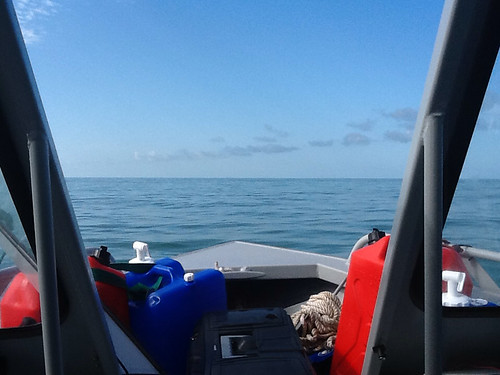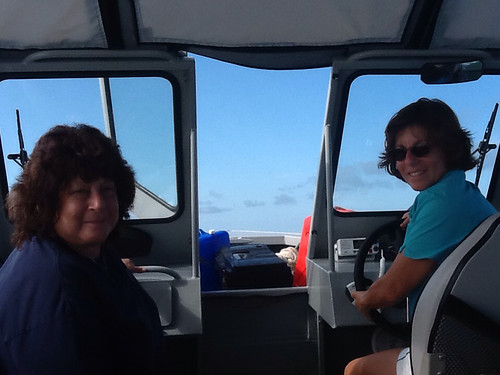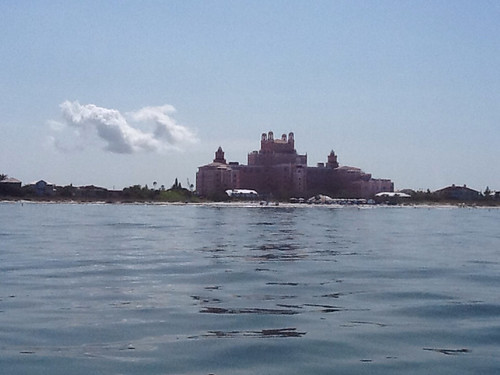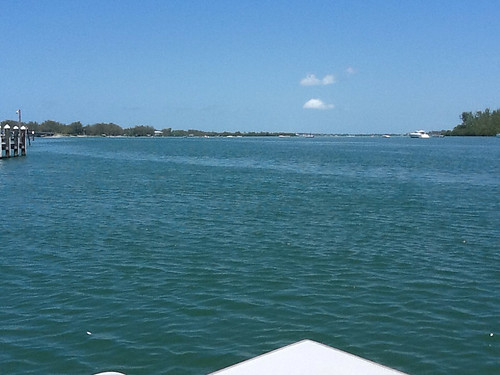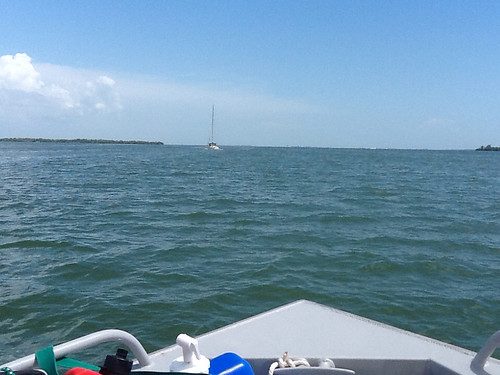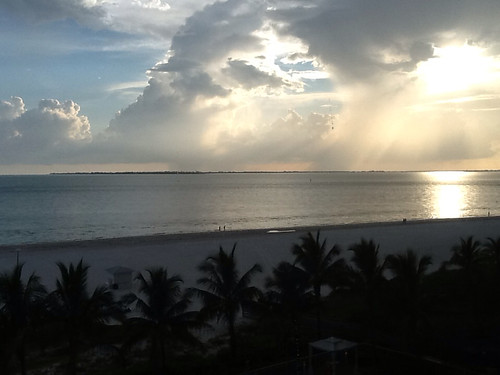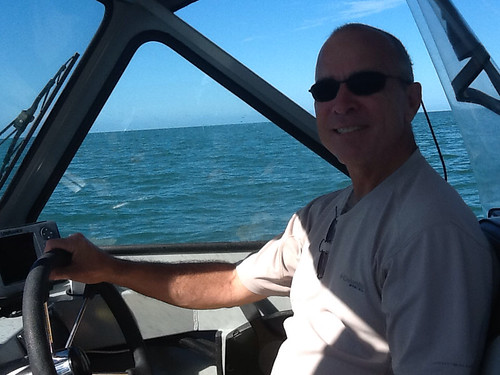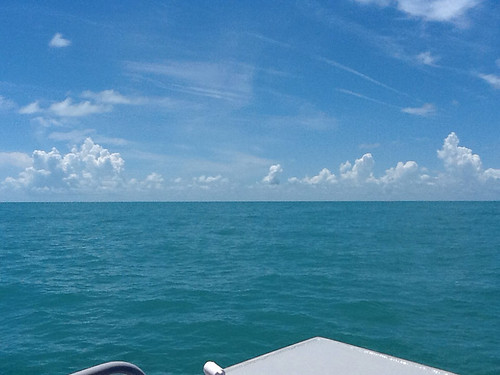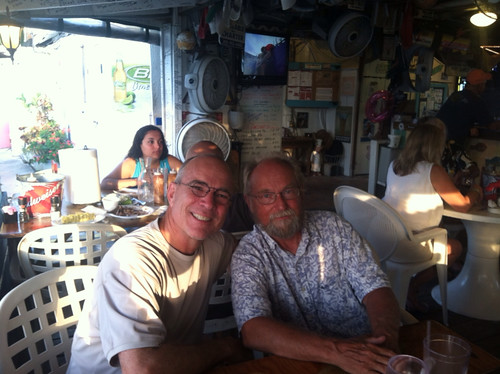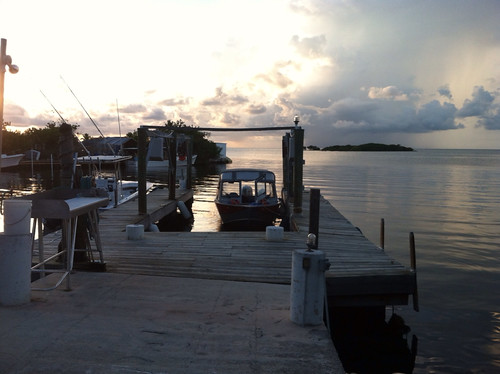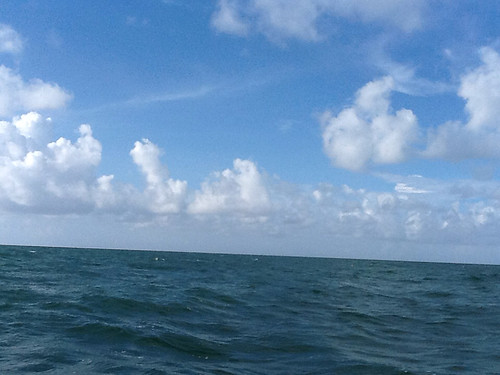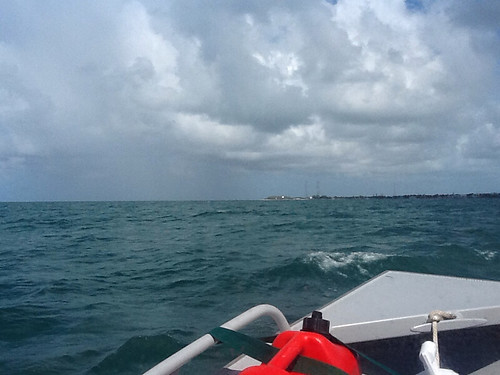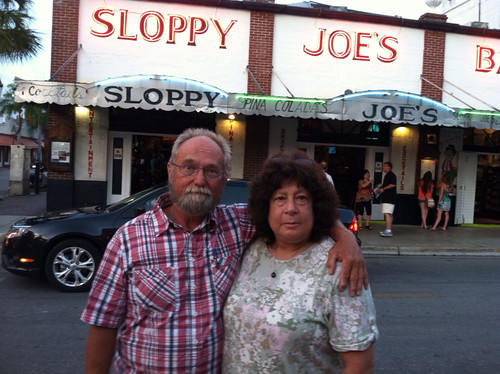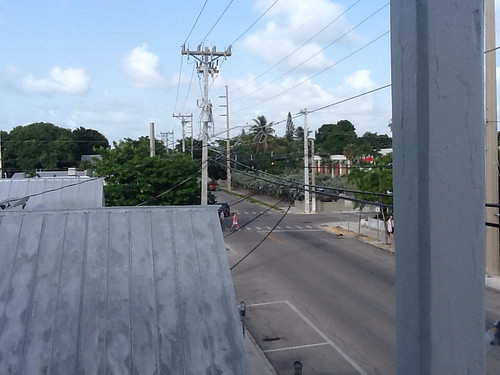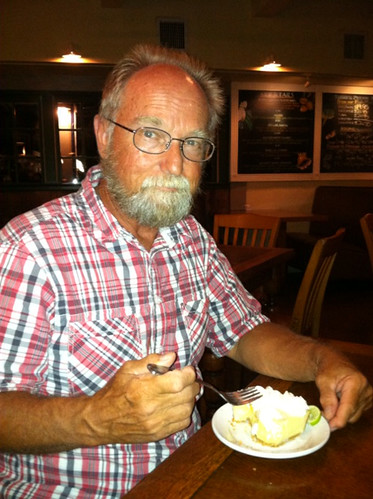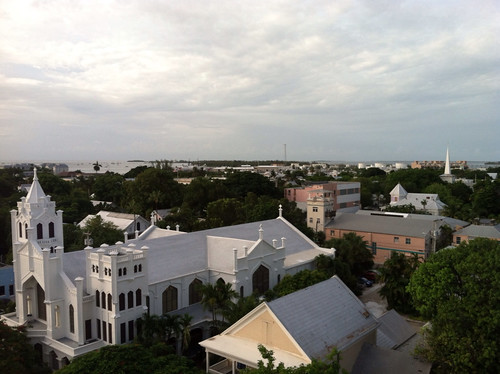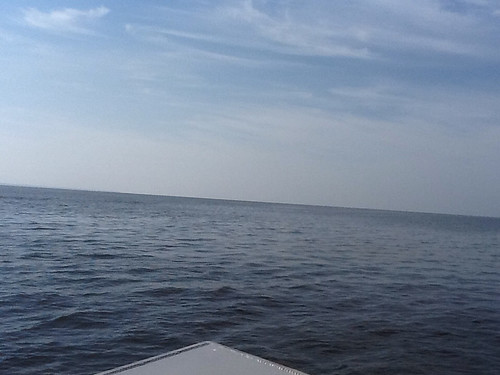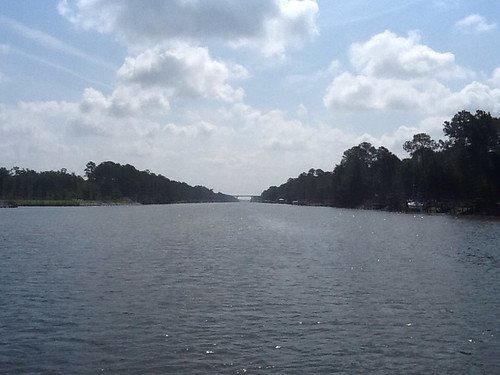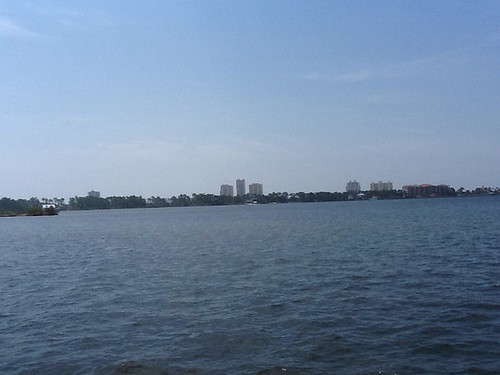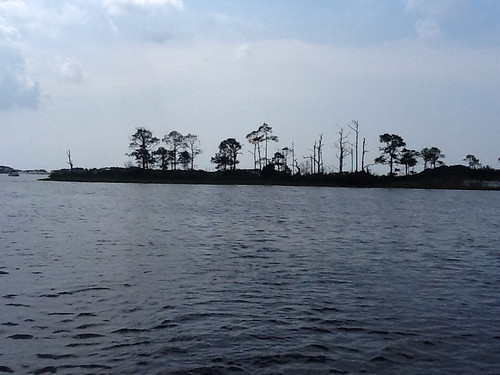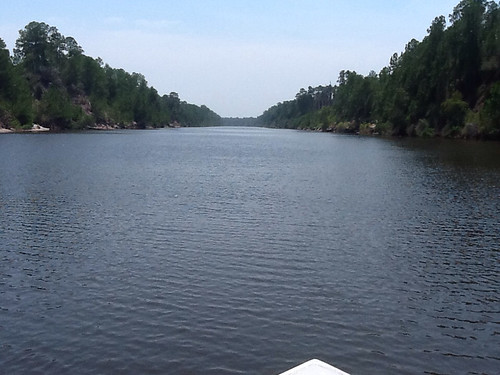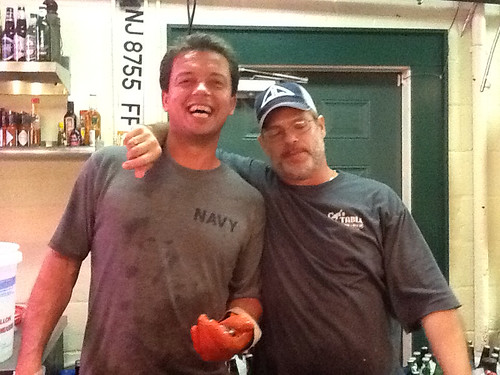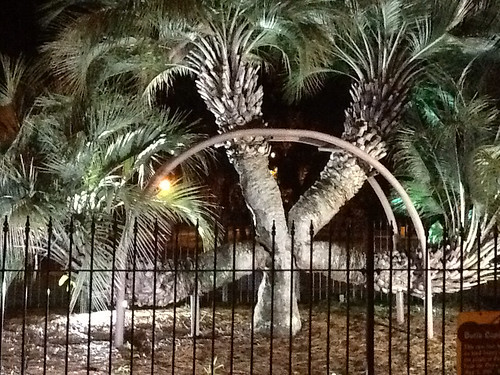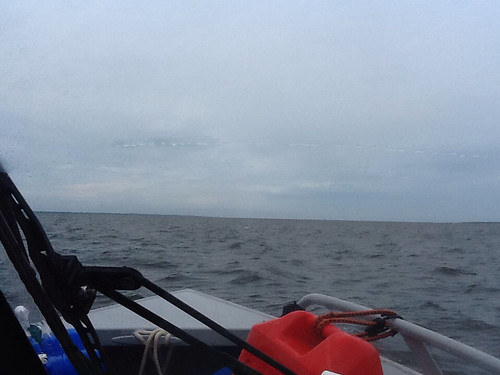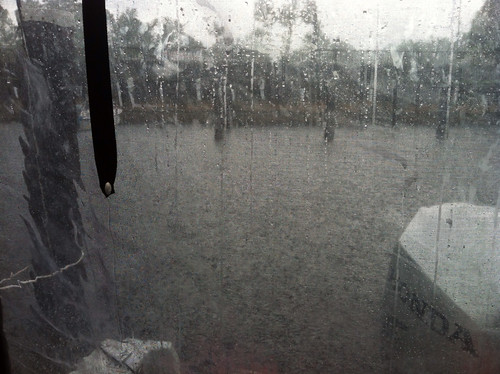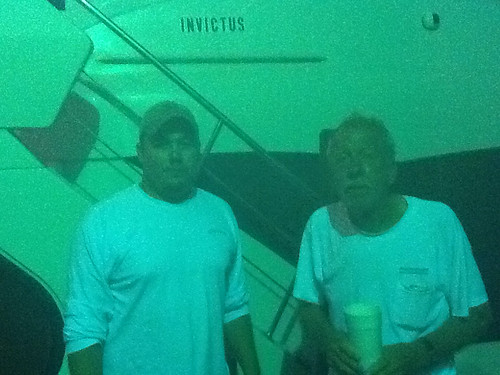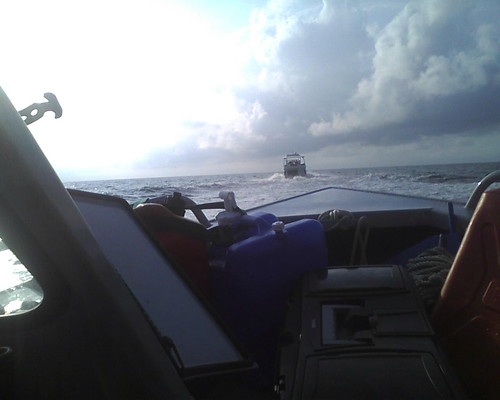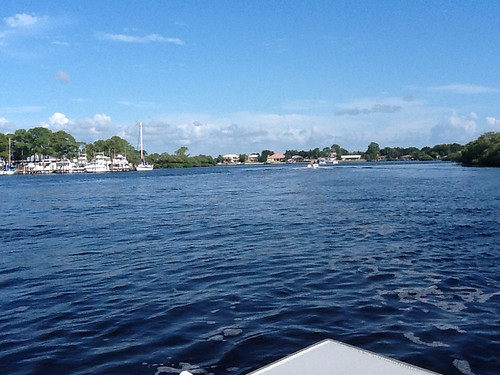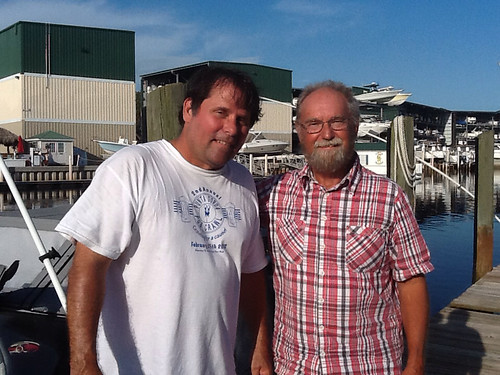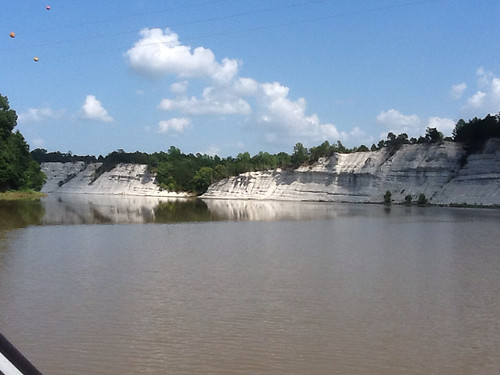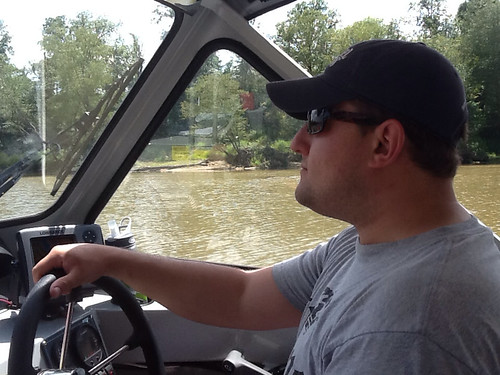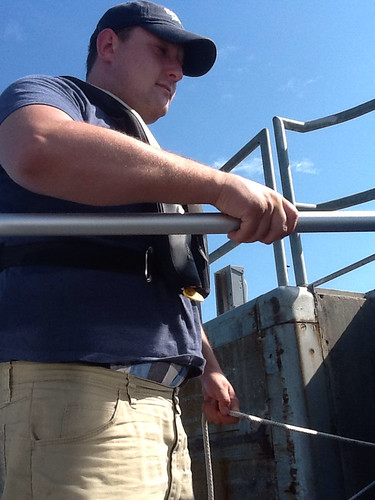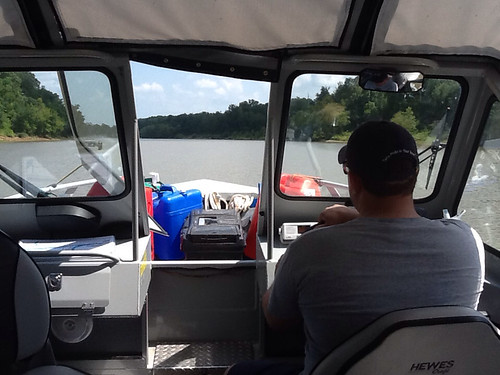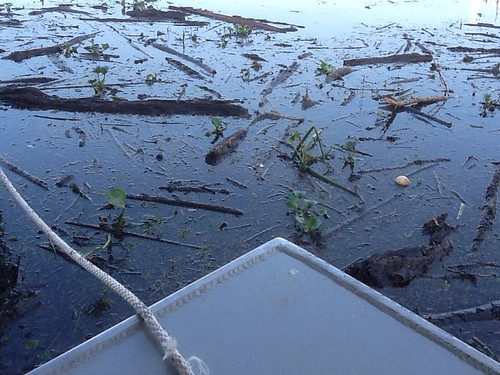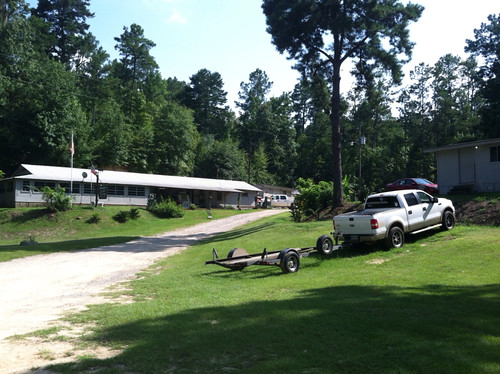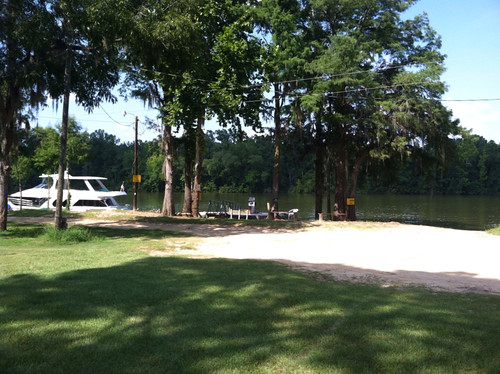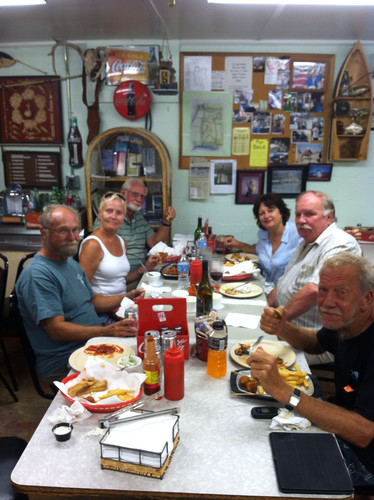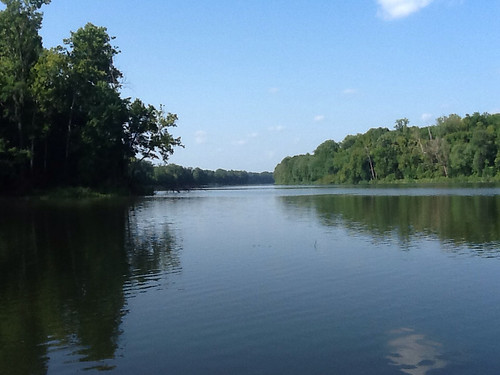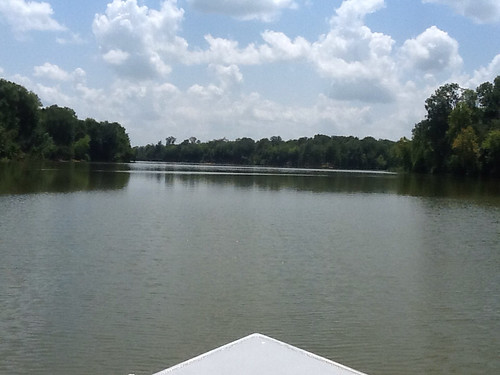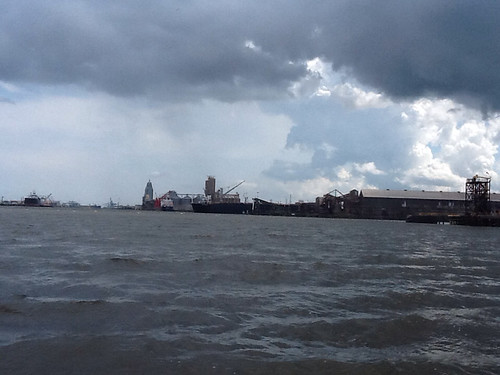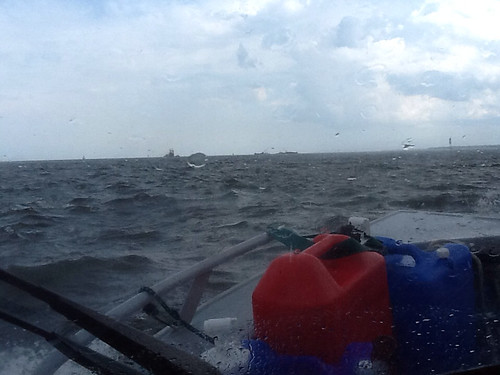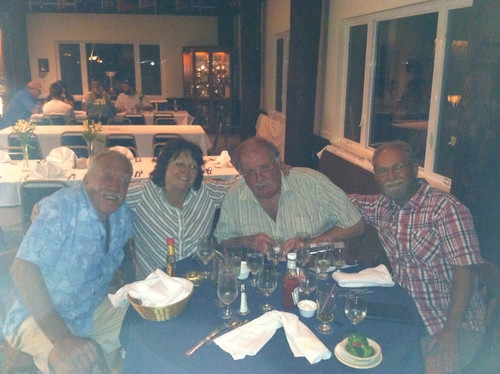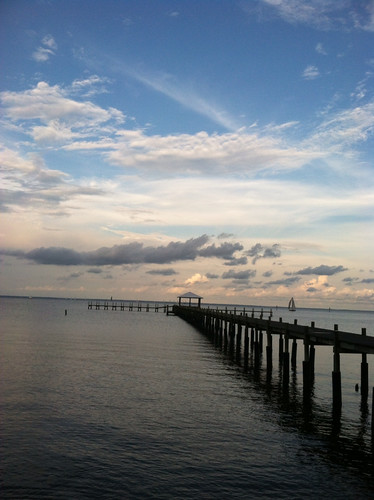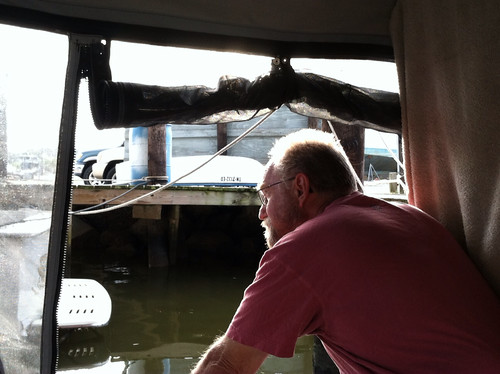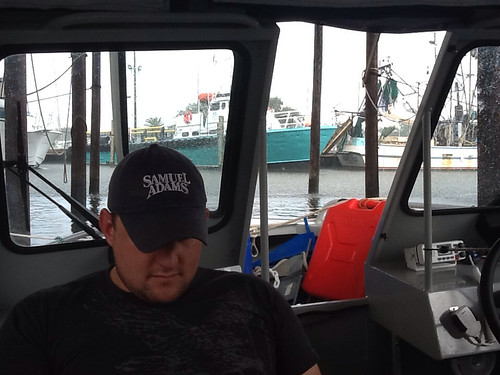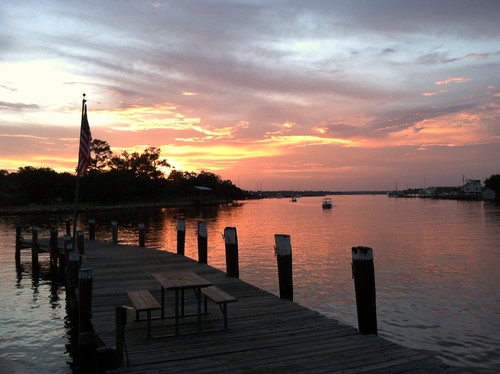My wife Delly, her sister Cathy Peckett and I were driven to the boat in Tarpon Springs early, to make the 140-mile transit down the Florida west coast to Ft. Myers before the end of day and hopefully before any afternoon storms. We ducked into the office of Stamas Yachts and met John Stamas, who had provided a docking place for Little Sadie. We had a nice visit and saw some of John's beautiful boats, then got underway early. We had been watching the weather report, and as predicted we motored out of Anclote River into a wonderfully calm Gulf of Mexico.
Since Cathy is an experienced hand with motorboating, I let her take the helm pretty much all day. She and her husband Ray had been up and down this coast numerous times, so she knew the territory.
We made good time running down along the coast, and I was interested to see from the water the solid line of resort development along the barrier islands that border the St. Petersburg area. I knew from driving along the other side of this stretch that in general this is a very old resort area. Some of the old hotels should be in the National Register of Historic Places.
After we crossed the channel going under the Sunshine Skyway Bridge into Tampa Bay, maneuvering around behind a fast freighter making it toward the port, we continued south past Bradenton to a pass from the Gulf inside to the protected GIWW, at Longboat Key. As we made our way to a dockside restaurant for lunch, it was interesting to see dozens of boats parked in the middle of the bay along a sandbar, the people parked on their beach chairs in and out of the water. Apparently all these folks ducked out of work before Friday noon and were setting up to have a weekend beach party.
After lunch we went back out to the Gulf and ran down past Sarasota and Venice, then moved inside through another pass, and turned south on the Intracoastal Waterway. Cathy said this strategy allowed us to avoid many No Wake zones by staying outside to this point. From here we stayed in the GIWW all the way to Ft. Myers. The passage alternated between canals and bays, and we made good time. Some of the bays, such as Charlotte Harbor, were quite large, but the day marks and the route on the GPS made the channel easy to follow.
In Ft. Myers late in the afternoon, I had to decant a Jerry can into the gas tank and we got directions to a fuel dock. After refueling, we tied up at the dock at the Pink Shell, our destination hotel for the night. I was piloting the boat, and learned how powerful tides can be as I struggled to get the boat maneuvered into a slip. The Pink Shell is a very luxurious, and pricey, resort hotel, but we were celebrating this get-together after my long odyssey, and I enjoyed a little luxury after sleeping on the boat so many nights.
Cathy's husband, Ray Gadd, had driven down from Tampa and met us there. He thought the Pink Shell was trying to be a little like Disney World, with an over-the-top variety of visual features and activities. We had a nice seafood dinner in their open-air restaurant and settled in for the night. I enjoyed the view from our balcony west across San Carlos Bay toward Sanibel Island.
Day 63. The girls drove the car back to Tampa, and Ray and I headed out of the bay into the Gulf and moderately choppy seas. I programmed a waypoint into the GPS with the latitude-longitude coordinates of Captain Pip's Marina in Marathon on the keys, our destination for tonight. Ray had learned that the recommended transit was not directly to Key West, but to this point on a key about halfway between the mainland and Key West. After we got some distance away from the coast, we set a "GoTo" line from our position to the destination. This feature displays a straight line to the target on the GPS chart, and your boat is a moving icon along it. All you have to do is follow the line. Very cool, as long as it doesn't lead you over any islands. This one actually did, so we went further west and set a new course that kept us well away from the coast. Ray took the helm for most of the day, and I took pictures.
We passed Naples, Marco Island, and Cape Romano, after which there is practically no settlement along the coastline and its Ten Thousand Islands, as this stretch to the Keys is all the western limit of Everglades National Park. Soon our course took us out of sight of land.
It was interesting to see the water color change, with the sunlight and the depth. We agreed that we liked the green color that the Gulf usually presents at this latitude.
By mid-day we were still riding moderate waves, but far to the south we could see an almost unbroken line of clouds building. Ray had explained that a squall line is indicated if the bottoms of the clouds start to show a flat, continuous dark underside. I thought these were starting to do that, and I was quite concerned that this line was probably between us and the Keys.
We kept running up on plane as fast as the chop reasonably allowed. Fortunately, as the afternoon wore on, the line of clouds slowly moved off to the east. We sighted land again as we passed Cape Sable, the south westernmost extent of the Florida mainland, and entered Florida Bay. As we approached Marathon we tried following some channel markers, but eventually slowed and called Captain Pip's for directions through waters fraught with islands and shoals. Barbara, the manager there, guided us through to the harbor entrance and into the marina's docks. We had enjoyed a good day's run down the Gulf coast.
We were shown to our room in one of the guest houses, which were a little hard to navigate through among the gardens and palm trees, but charming for that reason. I felt that Capt. Pip's was a homey, old-style Florida Keys resort, and I wished I were staying longer than one night. Barbara and the guys on the dock made us feel right at home.
Ray and I had an excellent seafood dinner at the on-site open-air restaurant and settled in for the night. I checked on Little Sadie and took her picture in the failing light.
Day 64. Ray had learned that the preferred route from Marathon west to Key West was to go out into the Atlantic, because the Gulf side (referred to as "the Outback" by locals) was too cluttered with shallows and islands and shoals. We listened to the weather and it sounded like we would have 1-2 ft. waves, but from the southeast, so more or less from behind as the line of the Keys curved to the west.
I was concerned about running into shallow water along the Atlantic side. Back up in Carrabelle I had watched Capt. Bruce Peterson plotting courses on his paper charts, so I pulled out my chart book. I found that there was a handy recommended course drawn along Hawk Channel and lat-long coordinates printed at every point where this route bent progressively from south to west. I plotted these into the GPS, and we had a safe course to follow right to the turn up into the west side of Key West. Ray ran this course in good time, and we found our way to Garrison Bight (harbor) on the north side of the Key before noon.
We tied off in our slip at Key West City Marina and took a taxi to historical Old Town and our B&B hotel, Pearl's Key West.
By late afternoon Delly drove in from Tampa, with my buddy Phil Berg, who had brought my car and boat trailer to Florida from Denver (so I could trailer the boat home after completing my voyage). We gathered up Ray and walked about 17 blocks down the "main drag", historic Duval Street. Delly and I had been here about 40 years ago, and it was now much changed. Apparently largely spurred by the arrival of cruise ships, this area had become a carnival scene -- bars, restaurants, galleries, souvenir shops, consumer offerings of every description without end. I didn't care for it, particularly because there was this evening a cruise ship in port, and Duval Street was like a swarming anthill.
I was pleased to see one of the landmarks from yesteryear, Sloppy Joe's Bar. Ernest Hemingway had lived and written his best-known books a few blocks away, for a dozen years in the 1930s, and this was his watering hole. The owner, Joe Russell, was one of his best friends and deep-sea fishing buddies. I'm a life-long Hemingway fan, so I find all this very interesting.
Day 65-66. These days were just tourist days in Key West. Ray flew back to Tampa and Phil nosed around town pretty much pursuing his own interests. Delly and I did a satisfying trolley tour around the historic old town area. I was interested to learn that after a fire burned much of early Key West, the city fathers made it a law that all the buildings had to have metal roofs, and they do. Here is the view from our balcony at Pearl's.
My favorite turista outing was when we toured the Hemingway home, and while the large stone house, outfitted mainly with antique Spanish furnishings, was beautiful and interesting, I liked seeing Ernest's study above the carriage-house. Kind of a shrine.
One evening before supper Delly, Phil and I went up on the roof of the La Concha Hotel, where folks congregate outside the rooftop bar to watch the Key West sunset. This hotel, built in 1926, is the tallest building in old town -- six stories tall. It was cloudy so the sunset was a bust, but I enjoyed the view over the city.
I was unsure about how to get back up to the mainland, out in the Atlantic or through Florida Bay on the Gulf side. Because it had been so rough coming west along the keys in the Atlantic, and every day the wind was coming from the east-southeast, I had real concern about beating against the seas all the way back along the 75 miles to Marathon. After Marathon, a well-marked Intracoastal channel goes up the inside, along the keys in Florida Bay, and would be no problem. However, on the Gulf side from Key West to Marathon the chart indicated that one would have to make a wide circle to the north, to avoid all the shallows along the keys.
Here came another random guardian angel. One morning while I was puttering around on the boat, a young fellow named Tony Conner came up and remarked "That's an Alaska boat." "Oh, you know about that? Yes, it's that type." We got to talking and I asked if he did boating, and he does. I explained my dilemma, and he said "If you try and go up through the Outback (the Gulf side), you really better know what you're doing. It's a mess." After some discussion we agreed that, even though it might be rough, the best bet would be to follow my charted route along Hawk Channel in the Atlantic back to Marathon, then shift inside and go on up in the Intracoastal sheltered by the Keys. Now all we would need the next morning was not too much wind and waves.
The final leg of the trip, now that I had reached my original end-point at Key West, involved looping around south Florida and returning to Tampa to disembark there. This would mean going a third of the way up the Florida east coast to Stuart, following the Intracoastal canal across the state through Lake Okeechobee to the west coast at Ft. Myers, and backtracking up the coast to Tampa.
Months ago, when I had described my planned trip and blog to Clint Kirry, the marketing manager at Hewes Marine (the boat manufacturers), he said that he and/or the president Dave Hewes might be interested in coming along on the trip for a couple of days, to see me and the boat in action on this very unusual application. Discussion evolved to the plan that Dave Hewes would fly in to Key West from their headquarters in Colville, Washington, and accompany Phil and me on the final five-day leg of the trip.
At the end of the day Tuesday Delly and I met Dave at the airport, properly outfitted for boating, with all his gear in a large backpack (complete with fishing pole). We got Dave set up at the hotel, met Phil, and over dinner started getting acquainted with our new arrival. I outlined my in-process agenda for the next five days, requiring reaching certain objectives each day in order to put Dave and Phil on airplanes in Tampa early the morning of the sixth day. Because the first day would be a push to get out of the Keys and some distance up the coast to a marina in Miami, we planned getting underway early the next morning.
